Have you ever shelled out big bucks for a banging skin care routine and thought, “WHY isn’t this working?!” Well, there’s a chance you’re using the wrong products for your skin type.
Skin type 101
Skin type relates to how much sebum your skin produces. Sebum is basically the oily stuff your sebaceous glands produce. It protects your skin from infections and keeps it hydrated.
According to the American Academy of Dermatology (AAD), the five main skin types are:
- normal
- dry
- oily
- combination
- sensitive
P.S. Acne can affect any skin type.
Here’s how you can determine your skin type at home, plus expert tips on how to care for your unique skin sitch.
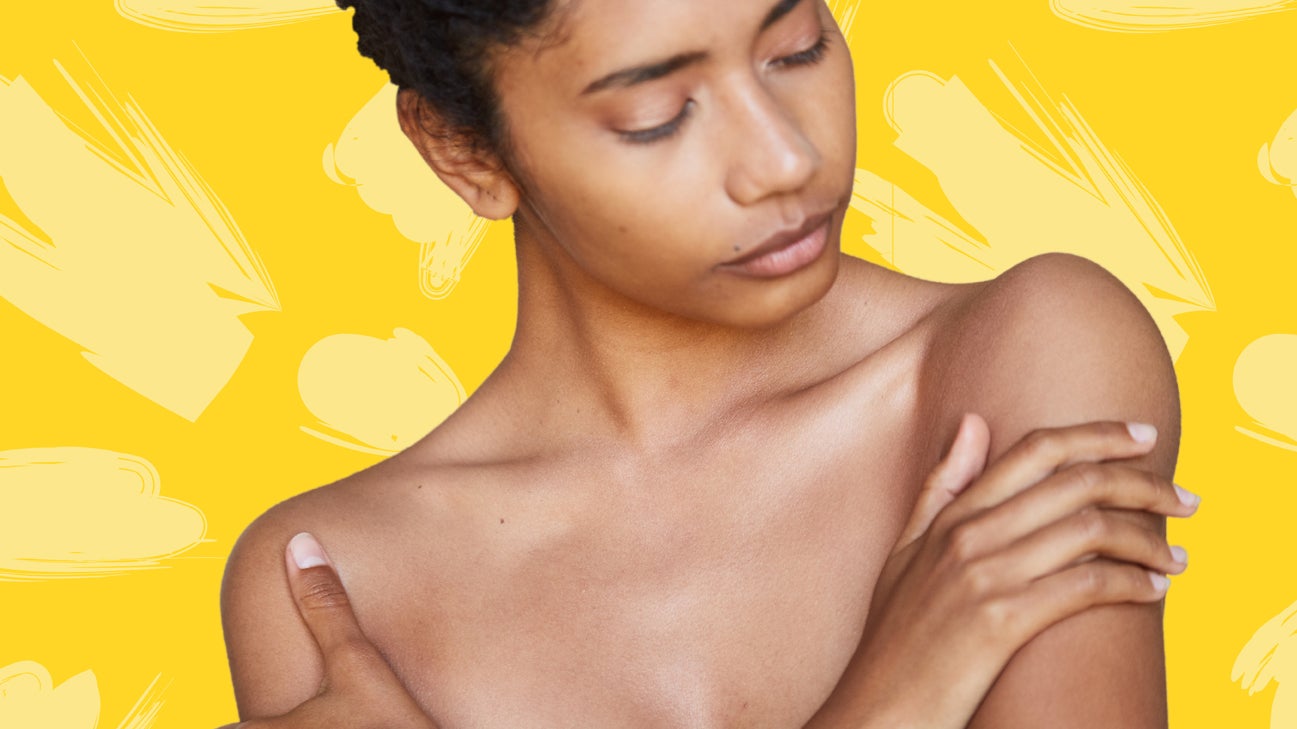
How can I identify my skin type?
Visiting a licensed aesthetician or dermatologist can help determine your skin type. But you can also DIY a skin type test at home. Here’s how.
Bare-face test
Start by washing your face with a mild cleanser. Gently pat it dry with a soft, clean towel. After 30 minutes, it’s time to inspect it for skin type clues 🔎.
- Normal skin. You don’t notice any redness, dry patches, or oily spots.
- Dry skin. Your skin feels tight and looks flaky or scaly.
- Oily skin. Your face looks greasy and feels oily.
- Combination skin. Your T-zone (the nose and forehead area) looks shiny, but the rest of your face is dry.
- Sensitive skin. Your skin is red, itchy, or inflamed.
Blotting sheet test
This test is super simple, but isn’t helpful for identifying sensitive skin. Just press a blotting sheet onto different parts of your face. Then hold the sheet up to a light to see how much oil is absorbed.
- Normal skin. There are tiny amounts of oil residue.
- Dry skin. There’s little-to-no oil residue.
- Oily skin. There’s a lot of oil residue.
- Combination skin. There’s oil residue from your T-zone but little-to-no residue from the rest of your face.
Skin type pictures
Need a side-by-side comparison of these skin situations? Here’s a visual look to see what skin type you’re slaying.
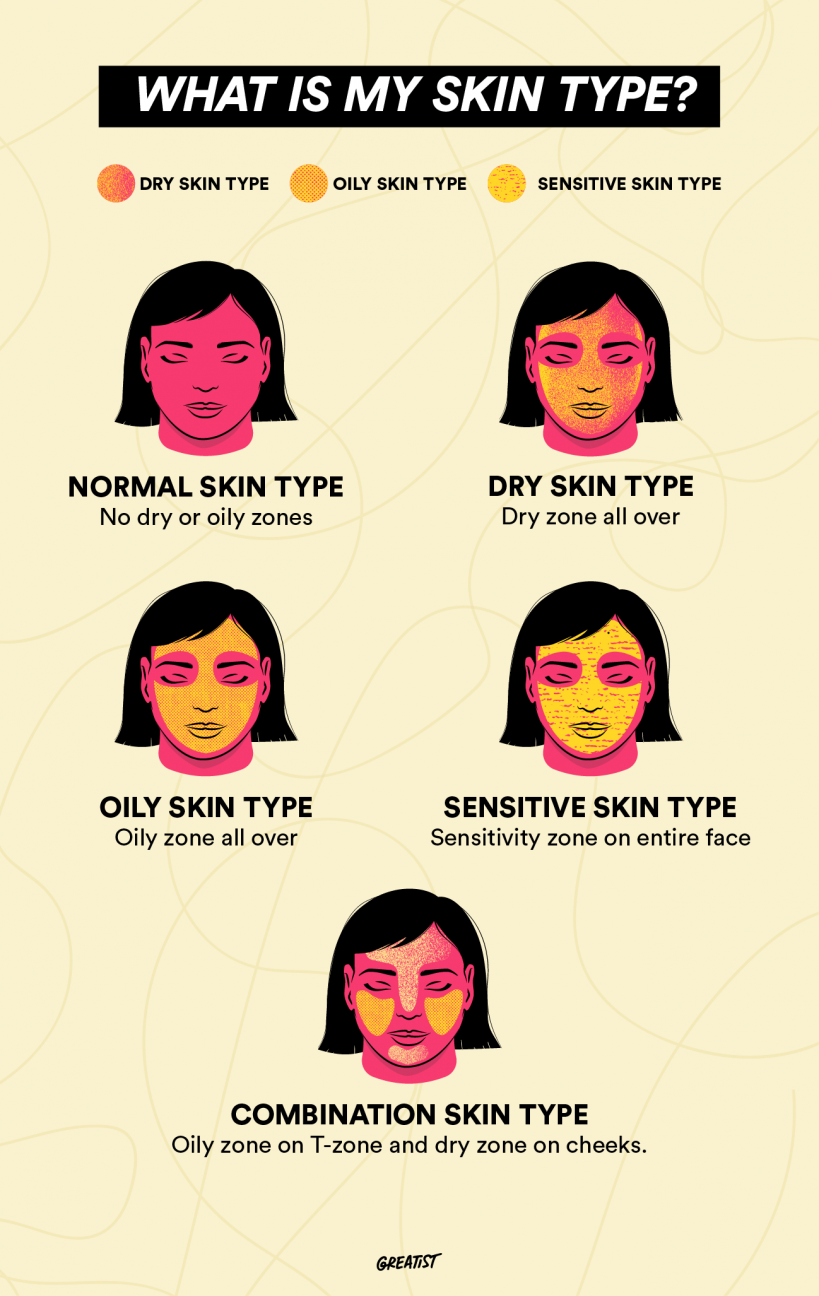
Think you’ve got it figured out? Here’s a breakdown of each skin type.
Normal skin type
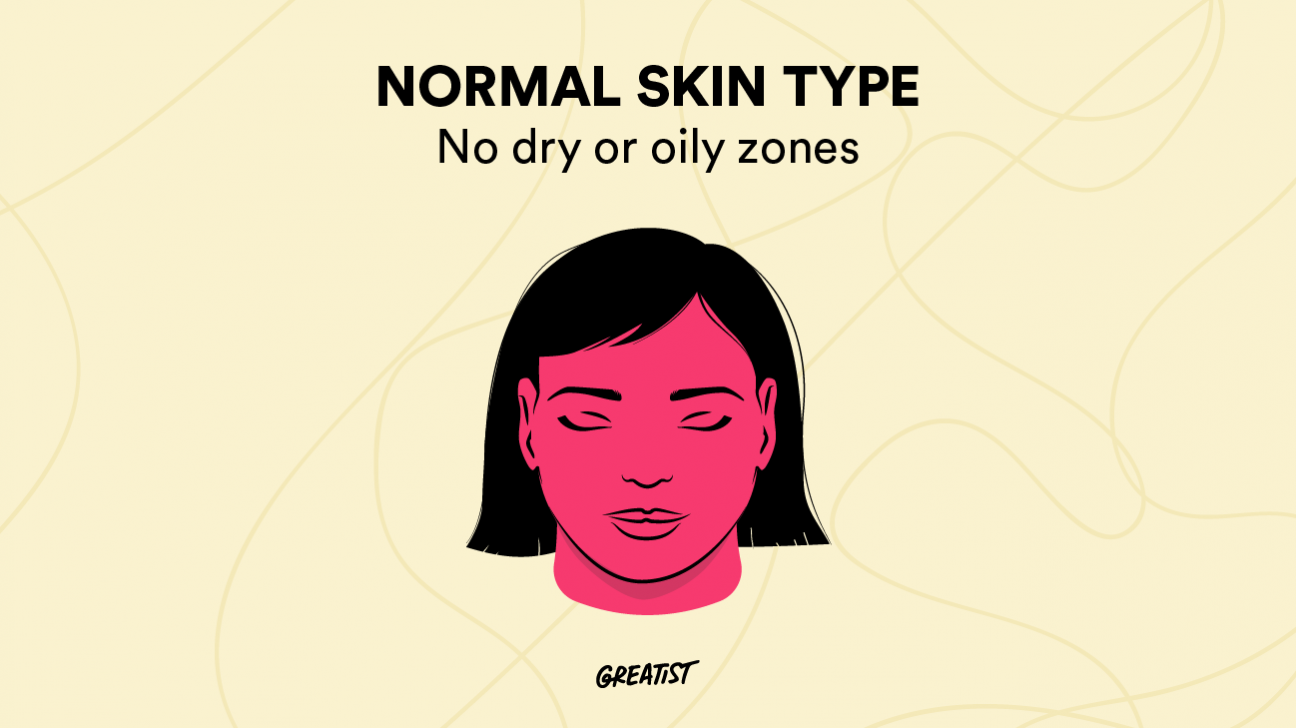
Normal skin has the Goldilocks effect to it. It’s not too oily nor too dry, it’s just right.
Signs of normal skin include:
- fine pores
- a smooth and clear complexion
- you’re not super sensitive to chemicals or skin allergens
How to treat normal skin
What to use: Your skin should stay in solid shape if you maintain a regular skin care routine. “I generally recommend that those with normal skin follow an oily skin regimen in the summer or more humid months and a dry skin regimen in the winter or drier months,” says Dr. Jeremy Fenton, a board certified dermatologist based in New York City.
What to avoid: Not much should irritate normal skin so you can really test the skin care waters.
Dry skin type
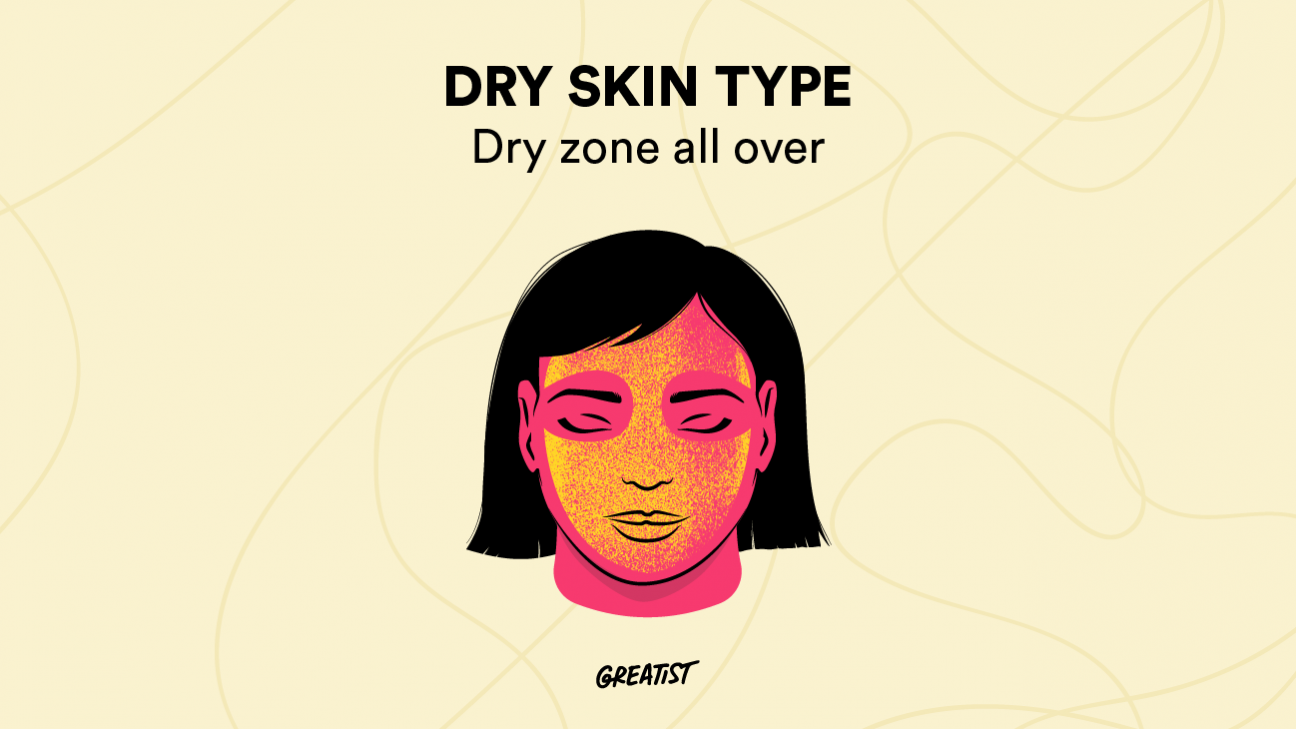
Dry skin produces less sebum than other skin types. It can lead to flaky, scaling, cracked, or itchy skin.
Signs of dry skin include:
- very tight pores
- rough skin texture
- dull or blotchy complexion
- prone to irritation or infection
- skin feels tight and lacks elasticity
How to treat dry skin
What to use: “Those with dry skin should stick with gentle skin cleansers that generally don’t foam,” says Fenton. He also recommends using moisturizing creams in lieu of lotions. Some fab ingredients to look out for include glycerin, ceramides, and hyaluronic acid.
What to avoid: Ditch drying ingredients like alcohols, sodium chloride, artificial fragrances, benzoyl peroxide, salicylic acid, and preservatives.
Oily skin type
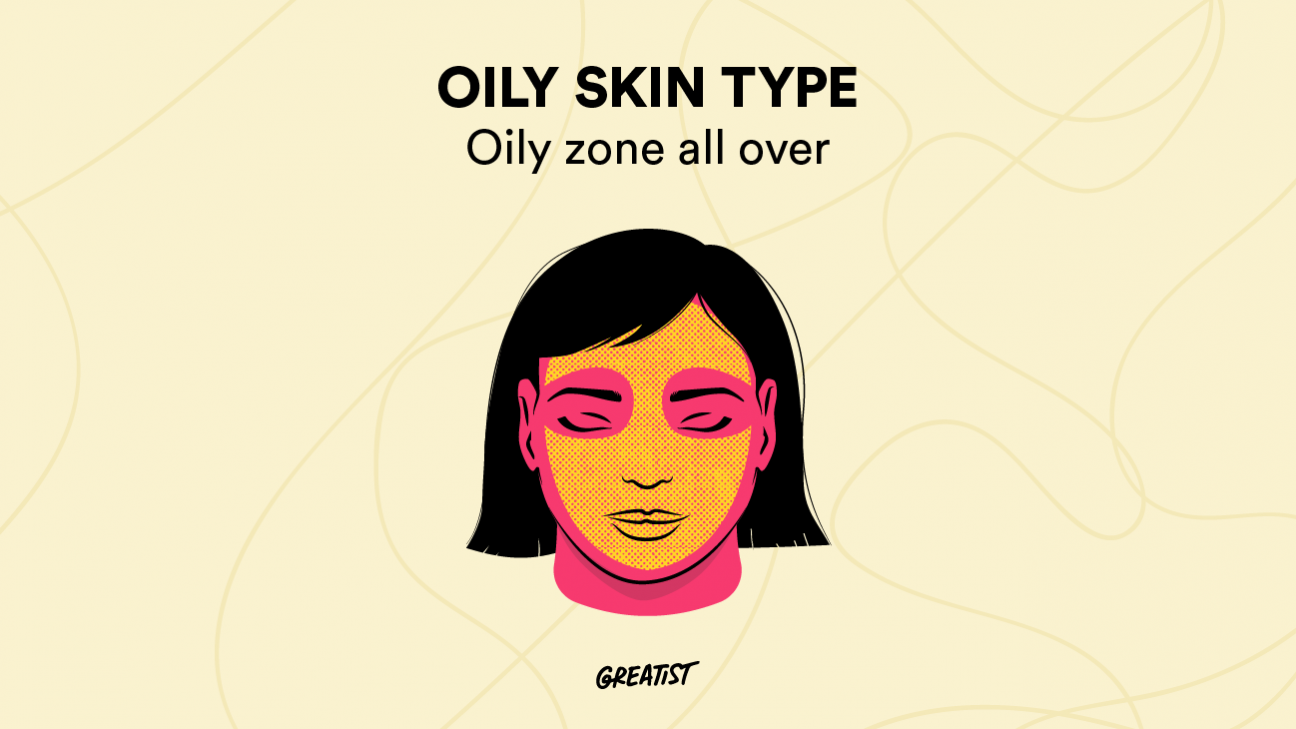
You can prob blame oily skin on overactive sebaceous glands. For some folks it’s hereditary. But hormonal changes, skin care products, and diet can also be a factor.
Signs of oily skin include:
- greasy or shiny skin
- skin looks thick or plump
- enlarged or clogged pores
- frequent blackheads, whiteheads, and other pimple probs
How to treat oily skin
What to use: “Those with oily skin should look for products that will be a little more aggressive with cleansing because the skin can tolerate it and will help prevent acne,” says Fenton. Salicylic acid, glycolic acid, and retinol are all great choices. And when it comes to moisturizers, Fenton suggests lightweight or gel-based lotions.
What to avoid: Steer clear of comedogenic ingredients like petroleum jelly (aka Vaseline), cocoa butter, isopropyl isostearate, sodium laureth sulfate, and capric acid. You also have to watch out for natural oils like soy, coconut, avocado, olive, or evening primrose oil.
Combination skin type
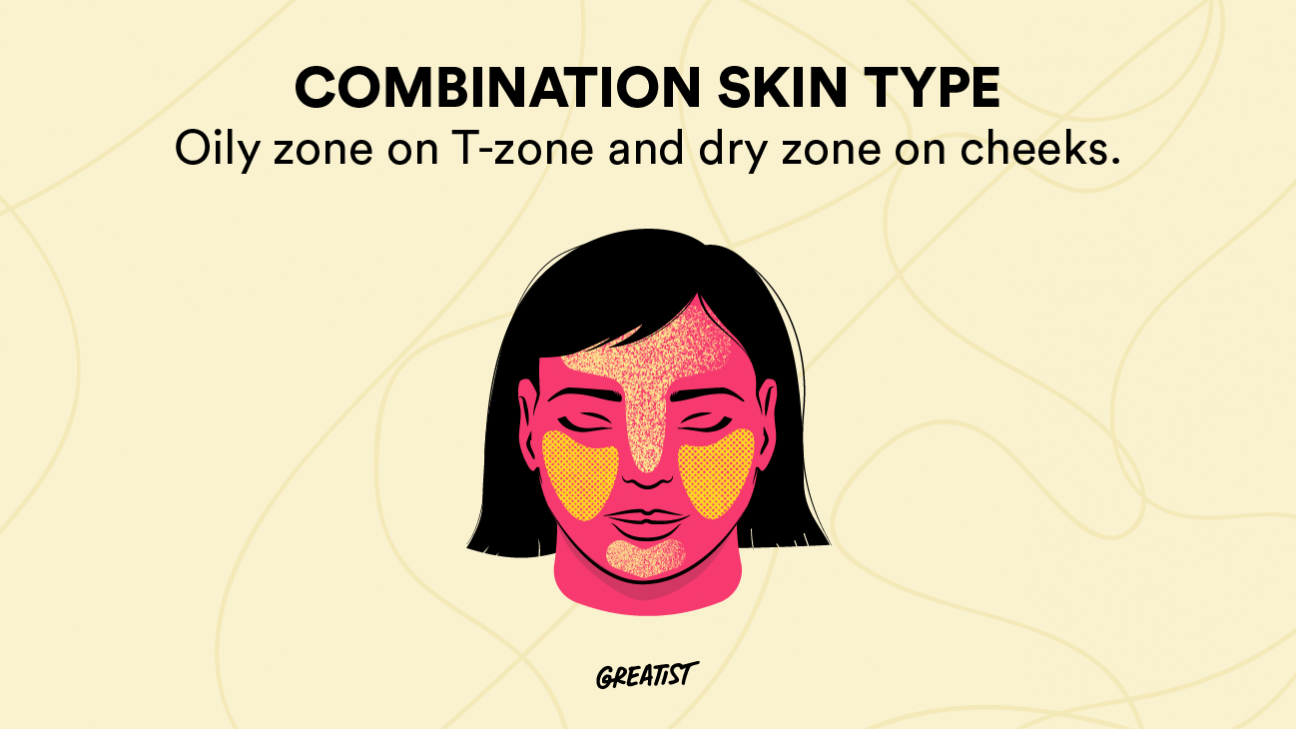
Combination skin is a mix of oily and dry skin. Some parts of the face produce too much sebum while other areas don’t produce enough.
Signs of combination skin include:
- an oily T-zone
- dry skin around your cheeks, eyes, and mouth
- congested skin or large pores on your forehead, nose, or chin
How to treat combination skin
What to use: Caring for combo skin can be a tad tricky. “You have to either apply different products to different regions on the face or go with the least drying product that your skin can tolerate,” says Fenton. You also have to choose your exfoliators wisely. Start with glycolic acid before working your way up to salicylic acid or retinol.
What to avoid: Don’t use products that will be harsh for your skin’s vibe. This includes alcohol, fragrances, and preservatives like parabens. They can make your oily parts oilier and dry patches drier.
Sensitive skin type
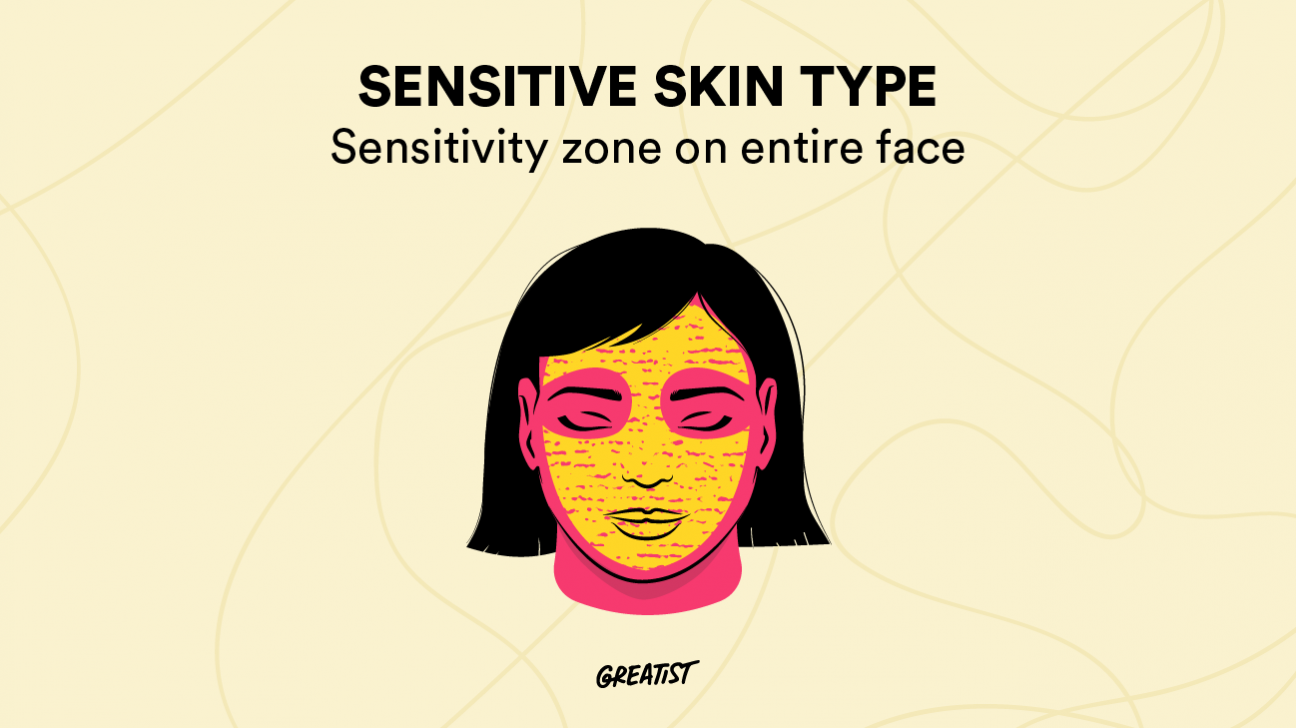
A 2019 study reported up to 70 percent of women and 60 percent of men have some degree of sensitive skin. It can stem from super dry or injured skin that’s more prone to reactions. It can also be a symptom of skin disorders like rosacea, eczema, or allergic contact dermatitis.
Signs of sensitive skin include:
- a red or ruddy complexion
- you can only tolerate very mild skin care products
- your skin itches, burns, and becomes flushed easily
How to treat sensitive skin
What to use: Dr. Fenton says you should stick to gentle cleaners like Cetaphil or Cerave. You should also opt for moisturizers designed for very sensitive skin.
What to avoid: Products that contain active ingredients or fragrances can sting sensitive skin. You should also be wary of “anti-aging” ingredients like retinoids.
Other skin situations
Acne-prone skin
Acne-prone skin can attack at any age and pop up on any skin type. Breakouts can be triggered by:
- Genes. Research shows acne can run in families.
- Excess oil. Excess sebum is a common contributor to acne.
- Diet. Studies show cutting down on dairy and sugar might improve acne symptoms.
- Meds. Certain medications like corticosteroids or birth control pills can cause flare-ups.
- Pollution. A 2017 study found that environmental pollution can cause inflammatory acne.
- Hormones. Hormonal acne is common during puberty, PMS, pregnancy, and even perimenopause and menopause thanks to fluctuating hormones.
How to treat acne-prone skin
What to use: You don’t have to go broke on a top-notch acne regimen. “The best over-the-counter ingredients for acne prone skin are salicylic acid and retinol,” says Fenton. They can help reduce oil and prevent clogged pores.
What to avoid: Oils, fragrances, silicone, lanolin, and sodium laureth sulfate can trigger a breakout.
Pimple PSA: If at-home treatments aren’t doing the trick, it’s time to talk with a dermatologist. They can help you come up with a dope skin care regimen to send your pimples packing.
Dehydrated skin
Don’t get this confused with dry skin. Dehydrated skin has nothing to do with your skin type. It just means your skin is thirsty and needs more moisture.
Dehydrated skin can be caused by:
- lack of sleep
- living in a dry climate
- not drinking enough water
- frequent hot showers or baths
- using harsh skin care ingredients
Not sure if your skin is dehydrated? Here are some symptoms to look out for:
- itchy skin
- sunken eyes
- dull complexion
- more noticeable lines and wrinkles
How to treat dehydrated skin
What to use: Since this is a hydration issue, simply drinking more water or eating hydrating foods like soups, fruits, and veggies should help.
You can also try skin care that seals in water and hydrates the top layer of your skin. Try moisturizers with ceramides, linolenic acid, hyaluronic acid.
Want the best products for your skin type? We got you
Here’s your go-to Greatist guide for the best products for each skin type and concern.
Normal, combination, and other skin types
- Best night creams
- Best face moisturizers
- Best collagen creams
- Best face exfoliators
- Best sheet masks
- Best face wash for men
- Best sunscreen
Dry skin
Oily skin
Sensitive skin
Acne-prone skin
- Best face washes for acne
- Best acne treatments
- Best cream for acne
- Best face masks for acne
- Best sunscreen for acne
tl;dr
- The main five skin types are normal, dry, oily, combination, and sensitive.
- Acne can affect any skin type.
- Using the wrong ingredients for your skin type can lead to irritation, premature signs of aging, and breakouts. Choosing the right product is key!
- Visit your dermatologist if you need more help figuring out your skin type. They can also help you to create a skin care routine that works for your skin.

0 Commentaires